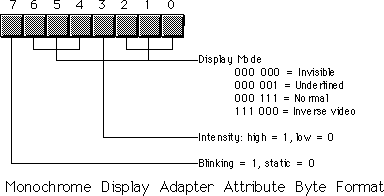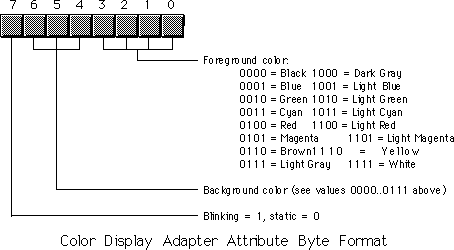
Hello Again Professor Hyde,We are currently working on ways to publish this text in a form other than HTML (e.g., Postscript, PDF, Frameviewer, hard copy, etc.). This, however, is a low-priority project. Please do not contact Randall Hyde concerning this effort. When something happens, an announcement will appear on "Randall Hyde's Assembly Language Page." Please visit this WEB site at http://webster.ucr.edu for the latest scoop.
Dallas gave me permission to take orders for the Computer Science 13 Manuals. We would need to take charge card orders. The only cards we take are: Master Card, Visa, and Discover. They would need to send the name, numbers, expiration date, type of card, and authorization to charge $95.00 for the manual and shipping, also we should have their phone number in case the company has any trouble delivery. They can use my e-mail address for the orders and I will process them as soon as possible. I would assume that two weeks would be sufficient for printing, packages and delivery time.
I am open to suggestions if you can think of any to make this as easy as possible.
Thank You for your business,
Kathy Chapman, Assistant
Printing and Reprographics
University of California
Riverside
(909) 787-4443/4444
in, out,
ins, and outs instructions, accessing devices
in the PC's I/O address space. While the video controller chips that appear
on PC video display adapters also map registers to the PC's I/O space, these
cards also employ a second form of I/O addressing: memory mapped I/O input/output.
In particular, the 80 x 25 text display is nothing more than a two dimensional
array of words with each word in the array corresponding a character on
the screen. This array appears just above the 640K point in the PC's memory
address space. If you store data into this array using standard memory addressing
instruction (e.g., mov), you will affect the characters appearing
on the display.Display: array [0..79, 0..24] of word;If you prefer to work with row major ordered arrays, no problem, the video display is equal to the following array definition:
Display: array [0..24, 0..79] of word;Note that location (0,0) is the upper left hand corner and location (79,24) is the lower right hand corner of the display (the values in parentheses are the x and y coordinates, with the x/horizontal coordinate appearing first).


To get reverse video on the color display, simply swap the foreground
and background colors. Note that a foreground color of zero with a background
color of seven produces black characters on a white background, the standard
reverse video colors and the same attribute values you'd use on the monochrome
display adapter.
You need to be careful when choosing foreground and background colors for
text on a color display adapters. Some combinations are impossible to read
(e.g., white characters on a white background). Other colors go together
so poorly the text will be extremely difficult to read, if not impossible
(how about light green letters on a green background?). You must choose
your colors with care!
Blinking characters are great for drawing attention to some important text
on the screen (like a warning). However, it is easy to overdo blinking text
on the screen. You should never have more than one word or phrase blinking
on the screen at one time. Furthermore, you should never leave blinking
characters on the screen for any length of time. After a few seconds, replace
blinking characters with normal characters to avoid annoying the user of
your software.
Keep in mind, you can easily change the attributes of various characters
on the screen without affecting the actual text. Remember, the attribute
bytes appear at odd addresses in the memory space for the video display.
You can easily go in and change these bytes while leaving the character
code data alone.
; GRABSCRN.ASM
;
; A short TSR to capture the current display screen and display it later.
;
; Note that this code does not patch into int 2Fh (multiplex interrupt)
; nor can you remove this code from memory except by rebooting.
; If you want to be able to do these two things (as well as check for
; a previous installation), see the chapter on resident programs. Such
; code was omitted from this program because of length constraints.
;
;
; cseg and EndResident must occur before the standard library segments!
cseg segment para public 'code'
OldInt9 dword ?
ScreenSave byte 4096 dup (?)
cseg ends
; Marker segment, to find the end of the resident section.
EndResident segment para public 'Resident'
EndResident ends
.xlist
include stdlib.a
includelib stdlib.lib
.list
RShiftScan equ 36h
LShiftScan equ 2ah
; Bits for the shift/modifier keys
RShfBit equ 1
LShfBit equ 2
KbdFlags equ <byte ptr ds:[17h]>
byp equ <byte ptr>
; Screen segment address. This value is for color displays only.
; Change to B000h if you want to use this program on a mono display.
ScreenSeg equ 0B800h
cseg segment para public 'code'
assume ds:nothing
; MyInt9- INT 9 ISR. This routine reads the keyboard port to see
; if a shift key scan code just came along. If the right
; shift bit is set in KbdFlags the a left shift key scan
; code comes along, we want to copy the data from our
; internal buffer to the screen's memory. If the left shift
; bit is set and a right shift key scan code comes along,
; we want to copy the screen memory into our local array.
; In any case (including none of the above), we always transfer
; control to the original INT 9 handler.
MyInt9 proc far
push ds
push ax
mov ax, 40h
mov ds, ax
in al, 60h ;Read the keyboard port.
cmp al, RShiftScan ;Right shift just go down?
je DoRight
cmp al, LShiftScan ;How about the left shift?
jne QuitMyInt9
; If this is the left scan code, see if the right shift key is already
; down.
test KbdFlags, RShfBit
je QuitMyInt9 ;Branch if no
; Okay, right shift was down and we just saw left shift, copy our local
; data back to screen memory:
pushf
push es
push cx
push di
push si
mov cx, 2048
mov si, cs
mov ds, si
lea si, ScreenSave
mov di, ScreenSeg
mov es, di
xor di, di
jmp DoMove
; Okay, we just saw the right shift key scan code, see if the left shift
; key is already down. If so, save the current screen data to our local
; array.
DoRight: test KbdFlags, LShfBit
je QuitMyInt9
pushf
push es
push cx
push di
push si
mov cx, 2048
mov ax, cs
mov es, ax
lea di, ScreenSave
mov si, ScreenSeg
mov ds, si
xor si, si
DoMove: cld
rep movsw
pop si
pop di
pop cx
pop es
popf
QuitMyInt9:
pop ax
pop ds
jmp OldInt9
MyInt9 endp
Main proc
assume ds:cseg
mov ax, cseg
mov ds, ax
print
byte "Screen capture TSR",cr,lf
byte "Pressing left shift, then right shift, captures "
byte "the current screen.",cr,lf
byte "Pressing right shift, then left shift, displays "
byte "the last captured screen.",cr,lf
byte 0
; Patch into the INT 9 interrupt vector. Note that the
; statements above have made cseg the current data segment,
; so we can store the old INT 9 value directly into
; the OldInt9 variable.
cli ;Turn off interrupts!
mov ax, 0
mov es, ax
mov ax, es:[9*4]
mov word ptr OldInt9, ax
mov ax, es:[9*4 + 2]
mov word ptr OldInt9+2, ax
mov es:[9*4], offset MyInt9
mov es:[9*4+2], cs
sti ;Okay, ints back on.
; We're hooked up, the only thing that remains is to terminate and
; stay resident.
print
byte "Installed.",cr,lf,0
mov ah, 62h ;Get this program's PSP
int 21h ; value.
mov dx, EndResident ;Compute size of program.
sub dx, bx
mov ax, 3100h ;DOS TSR command.
int 21h
Main endp
cseg ends
sseg segment para stack 'stack'
stk db 1024 dup ("stack ")
sseg ends
zzzzzzseg segment para public 'zzzzzz'
LastBytes db 16 dup (?)
zzzzzzseg ends
end Main